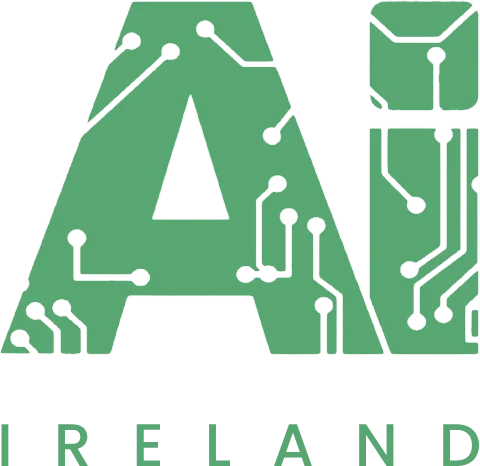AXA Ireland
Nominated Award:
Best Application of AI in a Large Enterprise
Website of Company:
https://www.axa.ie/

AXA Insurance Ireland is one of Ireland’s largest and oldest Insurance. AXA is a key player in motor, home, farm & small business markets with 1.1 million customers across Ireland.
AXA Ireland has 1290 employees based in both Northern Ireland and the Republic of Ireland.
AXA Ireland like most insurers has used machine learning for a long time for pricing for example. A lot of legacy systems remain on-premises with very little AI implementation in the cloud to date. It is an additional constraint while implementing AI and new cloud technology has you have to balance local and cloud systems.
What inspired us to start this project was to use data we knew we stored and had a need for but was only stored in unstructured documents.
Reason for Nomination:
The management and settlement of claims is a complex process involving a significant amount of documentation. From the notification of a claim to its settlement, many documents are exchanged between the Customer, AXA’s claims handlers and the third parties involved in managing the claim (garages, builders, assessors, solicitors, ..). Several thousand documents are received on a weekly basis and are subsequently processed by claims handlers who classify them, interpret and extract information in order to make decisions, and progress the management of the claims through an old claim management system. We have implemented our own analytical product called Auto-docs in order to simplify these tasks and accelerate the processing of the documents, opening the door to many more document-specific applications using unstructured data.
Auto-docs processes incoming documents and classifies them automatically. This allows Claims handler to prioritise their workload more easily and to proactively progress their most urgent tasks as well as removing filing tasks. It also allows detecting the presence of bodily injuries within documents and an earlier routing of the claims to the relevant teams. Ultimately the customers benefit from the added automation with a faster resolution of claims and AXA benefits from cost savings with faster settlements.
Auto-docs is a cloud-based Natural Language Processing solution and was integrated into our on-premise Claims Management System. This system is a legacy system built by AXA Ireland and introduced over 20 years ago. The Auto-docs solution was built in-house and uses multiple cloud services in order to deliver its final prediction and outputs. A workflow automation service orchestrates the processing of emails and documents following a decision tree selecting different paths based on services outcomes. It first sends documents to an OCR Engine which performs text extraction. The text is subsequently pre-processed and sent to a Machine Learning Engine. The machine learning engine relies on a combination of Machine Learning and Deep Learning algorithms in order to get the best prediction and automation. Finally, the predictions are sent back to the claims management system and documents are delivered classified to the handlers and on the correct claims. Documents are processed in real time and Auto-docs only delayed their receival by up to 30 seconds for the most complex documents.
The Data Science Problem itself was complex with over 100 classes of documents type to be classified and a very imbalanced dataset. We were very lucky to have several years of labeled data at our disposal from claims handlers’ day-to-day work and working with claims subject matter experts allowed us to identify the best strategies to solve the problem. The algorithms were calibrated so that only predictions with high confidence are being automatically indexed, with a precision of 95% or above per class to ensure only good predictions were kept. Documents which are not labeled are returned to the handler for manual labeling, providing human-in-the-loop feedback which will allow us to improve future models. The Automation Rate is high and since launch earlier this year the majority of the documents received has been automatically classified.
The solution was rolled out from day one on all claims type (Motor, Household, SME, … ) and is being consumed through our claims management systems directly with a feedback loop also collected in the application. Over 200 users spread across 3 sites (Belfast Derry and Dublin) and 40 specialist teams are experiencing the benefits of having their correspondences pre-classified.
Auto-docs is only a stepping stone towards more advanced claims analytics and process improvements using automation based on documents information. Every document class has its own potential for multiple additional NLP and machine learning driven tasks in the areas of Named Entity Recognition or further Classifications. All these tasks can allow a smarter and automated use of data, leveraging our internal systems and robotics solutions. A first application to detect potential personal injury on claims was also introduced. More use cases are discussed and will be continuously worked on relying on the set-up architecture.
Auto-docs was not only a very exciting challenge due to the complexity of the data science problem but it was also the first experience of AXA Ireland implementing Cognitive Services and Machine learning using cloud technology.
In order to get Executive buy-in and approval for a formal project we implemented a small R shiny application using microservices hosted on our local machines. It allowed a user to upload a document and see text extraction and predictions in action giving a very effective show and tell experience.
Additional Information:
We were missing a lot of information to explain some trends as they were only stored in documents and I started investigating the use of OCR to perform data extractions on specific document types only. I quickly discovered all our labeled documents and we started dreaming the many potential applications which NLP could enable us to perform. I organised an internship for a student in engineering and he implemented a deep-learning model which went beyond our expectations in terms of the number of classes we could tackle at once (>100 when we were aiming at a handful for an MVP) and with very high results.
I included a screenshot of the shiny app we used to showcase the application before the project as internally approved for implementation. Implementation was done this year.

